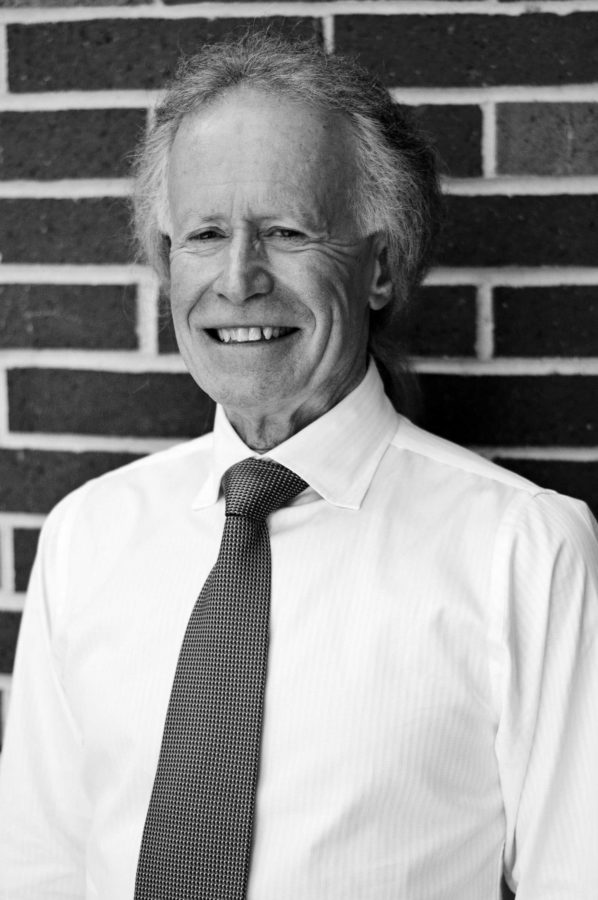SRJC Anthropology instructor Ben Benson knows a thing or two about diversity amongst cultures.
The son of Sephardic Jewish immigrants, he has lived with the Hopi pueblo Indians of the Southwest, done ethno-botany in the Amazon Rainforest and practiced archeology in Santa Barbara.
But it is SRJC that Benson calls home, and it is his message that is changing the way students see the world.
“What I really want to do is work with people to re-frame what it means to be a human being, what it means to be an American,” he said.
The past five hundred years of our cultural momentum has left our society in a severely complex and fragile socio-economic system. Benson aims to shed light on this subject through examining the cultures of the Americas that were capable of living indefinitely and sustainably, as well as the multiple civilizations that outgrew their means and collapsed.
“I’m trying to shift the paradigm a bit, because if we don’t it’s over. We’re not going to be able to sustain what we’re doing because we’re not only over-exploiting America, but we are now globally impacting the entire planet with what we’re doing. It is not sustainable,” said Benson.
Benson began his formal education in Santa Barbara, where he studied the Chumash culture of California Indians. The Chumash were there complex group of chiefdoms organized along Santa Barbara coast islands, and the edge of the central valley.
“In piecing together the archaeology, I had a very clear sense, that what they had achieved in Santa Barbara, was essentially a kind of Eden. Although there were challenges, they essentially maxed out a way of living that provided them with extraordinary beauty. The more I looked at it, the more I saw how successful they were in managing their habitat, and essentially sustaining a kind of paradise,” Benson said.
The Chumash suffered the same fate as the many other native groups of California: destruction of their way of life, and, ultimately, extermination by the Spanish.
“When I saw the demise of this culture, unfortunately having to excavate mass graves where Chumash people had died by the dozens and were all put down in the grounds, and I looked at what happened at the missions and so forth… I was just so utterly appalled at the contrast between what had been and what was after the arrival of Spanish culture,” Benson said.
Benson sheds light on this, as well as many other topics in his Native American Art and Culture class (Anthro 43), that he teaches in the Emeritus lecture hall.
The class covers the interrelationship between art, culture and spirituality of the prehistoric as well as contemporary native peoples of America; and in doing so, illuminates an entire history that has long been swept under the rug.
Like the Anasazi, for example, who were one of the few prominent state-level societies that once inhabited the Americas. A pre-historic culture, they grew out of the ‘four corners’ area of the American Southwest, and had achieved a level of culture and technological refinement that was comparable to what was going on at the same time in the Old World.
But what’s really interesting about the Anasazi is the mystery behind their downfall; a mystery that Dr. Benson is shedding light on.
Around 1300 AD, the Anasazi seemed to have abruptly abandoned their magnificent pueblo structures, ceremonial monuments and public centers. There was no catastrophic event, no foreign invaders or replacement of culture. A thousand communities in four states were abandoned to the snakes and the lizards.
Benson provides his students with a theoretical model of why this great civilization failed; and the reasons may sound eerily familiar.
“The Anasazi created their own environmental disaster. Their population grew and grew and grew, and at maximum population levels, the Anasazi hit the carrying capacity of there land. When they experienced horrible drought, the social structure imploded. They had so many people who had maxed out the habitat that they created their own environmental disaster,” Benson said.
The Anasazi are certainly not the only civilization who have experienced this phenomena. It is the nature of any state-level civilization to grow in size and complexity.
“You keep running into the limit of the technology. This is the nature of all civilizations. They always meet the carrying capacity of the land: how many people can live there with the given technology. They get bigger bigger bigger bigger, and suddenly you reach the amount of food production possible under the given technology,” Benson said.
This information becomes significant when you take a look at our current socio-economic system and level of cultural momentum.
The graph of human population tells the whole story. For more than ten thousand years of civilization, the population remained at relatively stable levels. But in just the last 500 years, which were marked by rapid western expansionism into the New World, human population has gone from about 500 million people to over 7 billion.
As long as our societal growth and complexity continues to feed off itself, we are destined to eventually meet the fate of the Anasazi.
Benson reminds us, “They could have rolled things back to simpler times. They could have paid attention. But they were a kind of cultural oil tanker that takes five miles to slow down. And they collapsed.”
Dr. Benson’s message calls for personal philosophical reform, and he is making a difference by asking, “Can we learn the lessons anthropology has to teach us?”




Kris Abrahamson, Dean, Liberal Arts and Sciences • May 25, 2012 at 2:39 pm
A well-written article revealing just a fraction the tremendous insight and knowledge that Ben Benson offers to SRJC students. Sign up for his class and find out!
-Kris Abrahamson, Dean